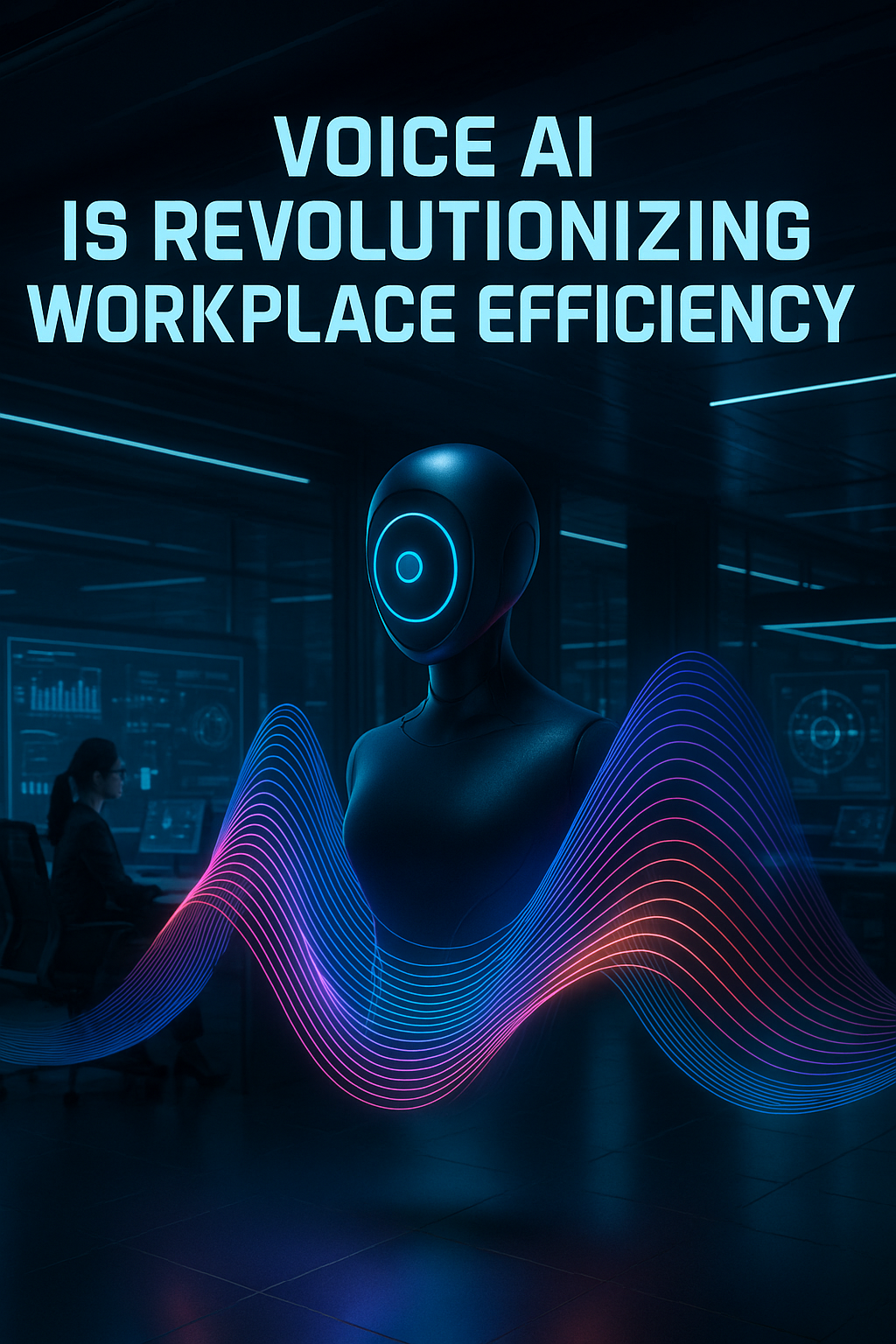
You’re Already Using Voice AI at Work — Here’s How It’s Changing Everything
# The Quiet Revolution: How Voice AI is Transforming the Modern Workplace
In an era where technological advancements are reshaping every aspect of our lives, it’s not surprising that artificial intelligence (AI) is making significant inroads into the world of work. However, the real transformation is happening quietly, almost invisibly, but profoundly. Voice AI is revolutionizing workplaces across industries by automating tasks, enhancing productivity in meetings, customer service, and healthcare. Despite concerns about privacy and job role changes, the world is learning to listen to and integrate this new technology.
## The Emergence of Voice AI in Workplaces
Using voice AI at work is no longer a futuristic dream; it’s a present reality. For many, the idea of AI at work might conjure images of ChatGPT generating text or virtual assistants managing emails. Yet, the most substantial shift is happening not on screens but through the sound waves in the air. Whether it’s whispered prompts during Zoom calls or voice bots taking fast food orders, AI is quietly changing how we work, often unnoticed by those it supports.
### The Utility of Voice AI Across Industries
Voice AI isn’t a mere gadget or a customer service novelty. It’s evolving into a fundamental aspect of various industries, fundamentally reshaping tasks across the board. From transcribing meetings and answering calls to drafting doctors’ notes, tools like Microsoft Copilot, Otter.ai, and drive-thru voice bots are integrating seamlessly into daily workflows, transforming what it means to participate actively in a workplace.
In the words of Mike Sorrenti, a game studio founder and voice AI advisor, “Voice AI is an excellent thing. It can be used for translation and many other things and is a very natural interface for kids, and older adults especially those with mild disabilities such as arthritis.” This statement underscores the inclusive potential of voice AI.
A UK government study revealed that civil servants using Microsoft’s Copilot AI for administrative tasks saved an average of 26 minutes a day, translating to about two weeks of gained time per year. As voice AI facilitates transcription, summarization, and virtual meeting assistance, it’s reshaping work culture, allowing professionals to focus on higher-order tasks.
### The Integration of Voice AI in Workplace Dynamics
With voice AI logging, transcribing, and summarizing meetings, often unbeknownst to attendees, workers are adjusting how and when they communicate during meetings. The shift from passive transcription to interactive, agentic systems is subtle but significant, as voice-activated AI assistants like Otter manage meetings without manual note-taking.
Sophie Fennelly, CEO of Sales TQ, notes, “Voice AI is no longer just futuristic hype; it is actively reshaping how we work and live.” Her insight echoes the growing sentiment that voice AI is becoming a crucial player in the enterprise landscape.
## Unveiling the Broader Implications
While voice AI tools save time and offer easier control, they raise substantial issues related to privacy, consent, and surveillance. As remote and hybrid work arrangements become the norm, these concerns cannot be ignored, necessitating thoughtful discussion at organizational and societal levels.
### The Fast Food Industry’s Embrace of Voice AI
Consider the fast food industry, where voice AI is already reshaping consumer interactions. At Hungry Jack’s in Australia, trials of AI-driven voice assistants in drive-throughs have been well-received, highlighting their potential for cost-saving on staffing, especially during late-night hours. While these technologies simplify operations, employees may need to shift towards roles that emphasize problem-solving, customer connection, and adaptability.
Australian franchises of KFC have also experimented with AI-driven voice orders, though customer feedback indicates a preference for human interaction. This trend reflects a broader truth: as workplaces evolve with AI support, workers must adapt to interact effectively with AI bots and enhance their skill sets.
### Transformations in Healthcare and Global Business Operations
Microsoft’s DAX Copilot is revolutionizing healthcare by automating recordkeeping and drafting care plans based on conversational data between doctors and patients. This allows physicians to devote more time to patient care, ultimately improving healthcare outcomes.
Nurses, too, benefit from AI integrations, with ambient voice technologies reducing documentation burdens and preventing burnout, thereby enhancing patient care. Moreover, global businesses with limited resources can now deploy voice AI systems via platforms like Ring AI, opening new avenues for multilingual support and customer services.
In the words of Gev Balyan, CEO of Hoory AI, “Startups and solopreneurs now have an always-on assistant — answering calls, qualifying leads, booking — at enterprise scale, without enterprise cost.”
## Adapting to a New Work Paradigm
Whether you’re running meetings, managing customer support calls, or trying to keep up with daily emails, Voice AI is likely creeping into your daily life. This technology reshapes communication with colleagues, transforms routine tasks, and impacts job growth trajectories.
As an employee, AI could free you from repetitive tasks, allowing you to engage in decision-making and AI tool management. However, understanding AI’s strengths, managing its errors, and communicating with these ever-listening tools will become crucial skills.
Business owners face different challenges and opportunities. While AI promises enhanced productivity and reduced costs, navigating privacy, trust, and training issues will be critical. Hiring individuals with strong judgment, empathy, and communication skills to work alongside AI systems could become essential.
## Looking Forward: Adapting in an Age of Automation
AI isn’t ready to replace jobs wholesale, but it is already altering roles in subtle ways. Indeed, the key to staying relevant is leveraging in-demand skills that AI cannot replicate, such as human connection, nuanced understanding, and adaptability in unexpected situations.
Is your organization prepared to embrace the changes voice AI brings? Can you adapt your skills to complement AI’s strengths while maintaining the human elements that make work meaningful? The quiet revolution is here, and how we respond will shape the future of work for years to come.

